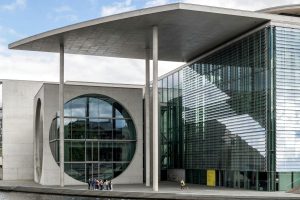15-Minute Cities: Urban Design Ending Car Dependency
In recent years, there has been a growing movement towards creating more livable and sustainable cities. One of the key concepts behind this movement is the idea of “15-minute cities,” where all essential services and amenities are within a 15-minute walk or bike ride from a person’s home. These cities are designed to reduce car dependency and promote more sustainable modes of transportation. In this article, we will explore the concept of 15-minute cities and how urban design can play a crucial role in making it a reality.
What are 15-Minute Cities?
The 15-minute city concept was first proposed by Professor Carlos Moreno from the Sorbonne University in Paris. It refers to a city where all basic needs, such as access to healthcare, education, employment, and leisure, are within a 15-minute reach by foot or bike. This idea challenges the traditional urban planning approach, which is centered around the use of cars and relies heavily on long-distance commuting.
The main goal of 15-minute cities is to reduce car dependency and promote sustainable forms of transportation. By having all essential services within a short distance, people are less likely to rely on cars for daily activities, reducing traffic congestion and air pollution.
The Problem with Car Dependency
In many cities around the world, cars have become the primary mode of transportation, resulting in traffic congestion, pollution, and other social and environmental issues. According to the World Health Organization, air pollution caused by cars results in 4.2 million premature deaths every year. Moreover, the time and resources spent on daily commuting have a negative impact on people’s mental and physical well-being.
Car dependency also contributes to urban sprawl, where cities expand outward, requiring more land for infrastructure and resulting in the loss of natural habitats. This phenomenon makes cities less sustainable and less livable.
The Role of Urban Design in Creating 15-Minute Cities
Urban design plays a crucial role in creating 15-minute cities. It involves planning and designing the physical and natural environments of urban areas, taking into account the needs and well-being of its residents.
One of the key principles of 15-minute cities is mixed-use development, where different land uses, such as residential, commercial, and recreational, are intermingled. This allows people to access essential services and amenities in their neighborhood without the need for long-distance travel.
Pedestrianization is another key element of 15-minute cities. By creating walking-friendly streets and prioritizing pedestrians over cars, it becomes more convenient and enjoyable for people to walk or bike to their destinations. This also encourages social interactions and contributes to a sense of community within neighborhoods.
Examples of 15-Minute Cities
Some cities around the world are already implementing the concept of 15-minute cities with success. Paris, for example, has invested in creating a network of cycling paths and pedestrian-friendly streets, making it possible for people to access any part of the city within 15 minutes. In Melbourne, Australia, the city has implemented a plan to create 20-minute neighborhoods, where residents have access to all essential services within a 20-minute walk or bike ride.
Several cities in the United States, such as Portland and San Francisco, have also embraced the 15-minute city concept by investing in public transportation, promoting bike-sharing programs, and creating pedestrian-friendly streets.
The Future of Cities
The concept of 15-minute cities is gaining momentum, and it is clear that it is not just a passing trend. As cities continue to grow, the need for sustainable and livable urban environments becomes more apparent. By reducing car dependency and promoting alternative modes of transportation, 15-minute cities can help create more equitable, healthier, and more environmentally-friendly cities.
Conclusion
The 15-minute city concept presents a new way of thinking about urban planning and design, focusing on creating livable, sustainable, and socially inclusive cities. By reducing car dependency and promoting alternative modes of transportation, cities can become more equitable, healthier, and more environmentally-friendly places to live in. As we move towards a more sustainable future, the concept of 15-minute cities will play an important role in shaping our cities for the better.











